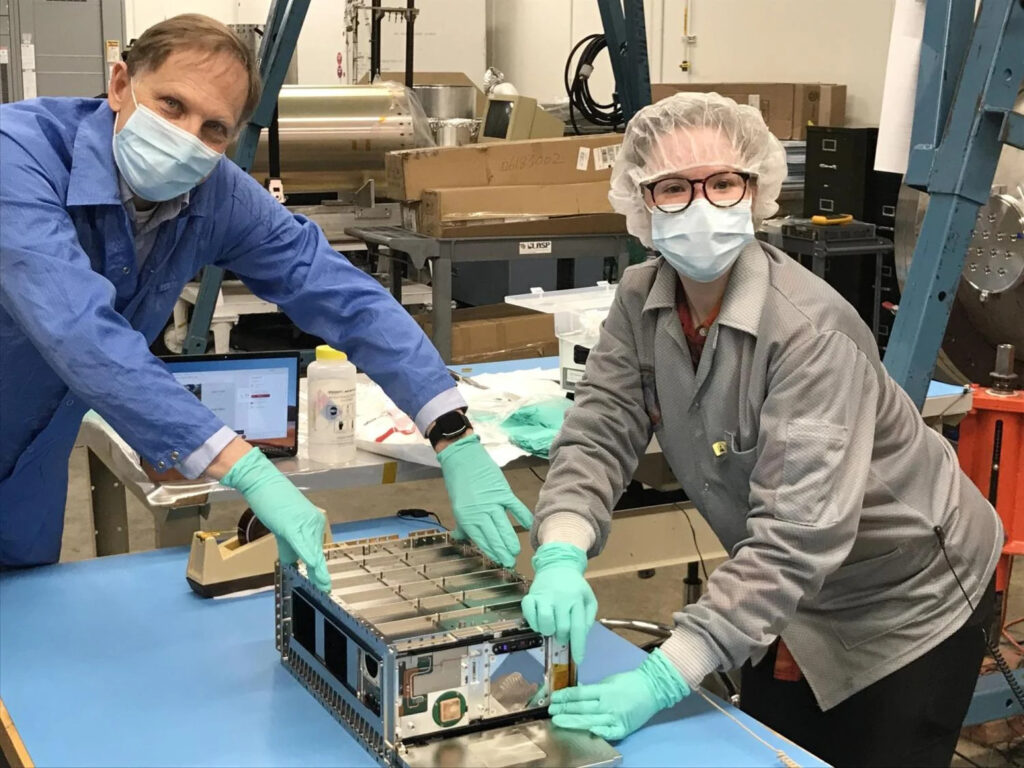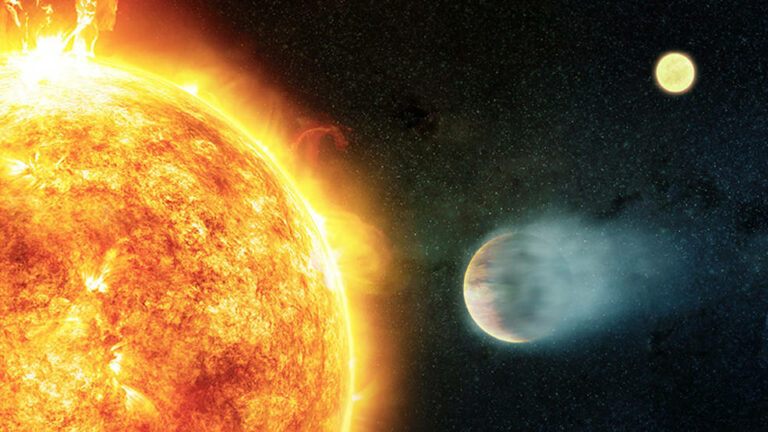Compact 14-Inch Satellite Investigates Evaporation of ‘Hot Jupiter’ Exoplanets into Space.
A miniature ultraviolet telescope on a cubesat has been observing the atmospheric evaporation of certain hot Jupiters.
Observing the atmospheric erosion of seven “hot Jupiters,” a suitcase-sized cubesat has uncovered unexpected variations in the pace at which these large, inflated planets are evaporating.
Launched in September 2021, the Colorado Ultraviolet Transit Experiment (CUTE) orbits Earth at an altitude of 525 kilometers (326 miles), equipped with a single ultraviolet CCD camera designed to detect transits of giant exoplanets.
Hot Jupiters, akin to Jupiter, migrated closer to their stars over time, settling into orbits just a few million kilometers away. Proximity to their stars causes the atmospheres of these gas giants to expand due to heat. The hotter the atmosphere, the more the planet swells, and the more expanded and diffuse it becomes, making it susceptible to the star’s radiation wind—similar to the solar wind from the sun—blowing away the atmosphere. Often, these evaporating planets exhibit comet-like tails formed by streaming atmospheres.
CUTE has examined seven hot Jupiters to date, observing their transits across their stars and identifying silhouettes of gases such as iron, magnesium, and hydroxyl. This detection is possible because as material is blown away from the planets, it absorbs some starlight. Scientists can examine absorption patterns to deduce chemical signatures. However, among these seven worlds, some appear to be undergoing evaporation while others remain resilient against the radiation onslaught from their stars.
“The planets seem to be coming in all flavors,” remarked Kevin France, the mission’s principal investigator from the University of Colorado, Boulder.
As an illustration, CUTE observed the transit of the hot Jupiter WASP-189b across its star, situated 300 light-years away in the constellation of Libra, the Scales. The findings revealed that WASP-189b is undergoing an extraordinary atmospheric material loss at a rate of 400 million kilograms (900 million pounds) per second.
Conversely, another hot Jupiter known as MASCARA-4b (MASCARA denoting Multi-site All-Sky Camera), three times the mass of Jupiter and orbiting a star 557 light-years away, exhibited no detectable gas loss whatsoever.
Between these two extremes lies KELT-9b, another three-Jupiter-mass planet (named after the Kilodegree Extremely Little Telescope in Arizona and South Africa). Positioned 667 light-years away, it holds the record as the hottest known exoplanet, with a dayside temperature of 4,300 degrees Celsius (7,800 degrees Fahrenheit). Surprisingly, the team observed that it was only experiencing a modest loss of gas from its atmosphere.

While concrete explanations for why certain planets exhibit atmospheric loss in the face of stellar winds while others do not remain elusive, Kevin France suggests that the interplay of a planet’s gravitational strength in retaining its atmosphere and the level of activity on the host star likely influences the intensity of radiation gusts.
CUTE has numerous hot Jupiters left to scrutinize before its mission concludes in 2027, at which juncture the compact 14-inch-long (35.6-centimeter-long) cubesat will re-enter Earth’s atmosphere and simultaneously disintegrate.
Beyond hot Jupiters, the mission, developed in part by undergraduate and graduate students at the University of Colorado, Boulder, could contribute to a better understanding of smaller worlds as well. Kevin France remarked, “There’s a lot of evidence that suggests that super-Earths begin as planets the size of Neptune with large, puffy atmospheres, which then lose so much mass that all that is left is the rocky core and possibly a thin atmosphere.”
Even within our own solar system, Mars, the red planet, has lost a significant portion of its water and atmosphere to the solar wind, an ongoing process measured by NASA’s MAVEN mission. Grasping the mechanisms on the broader scale of hot Jupiters may offer insights into how smaller worlds like Mars become devoid of atmosphere.
The outcomes from CUTE were presented at the 2023 meeting of the American Geophysical Union in San Francisco.
This article is republished from SpaceCom under a Creative Commons license. Read the original article.
Do not forget to share your opinion with us to provide you with the best posts !





0 Comments